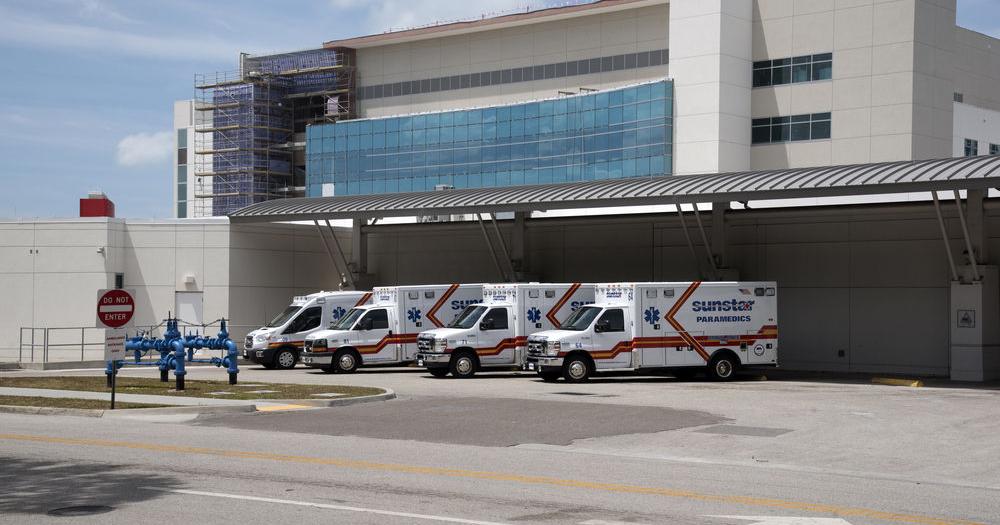I've been watching this one for a while. It's incredible but also, this could easily be done in many other places for this type of surveillance data.
Yes, PBS did an amazing documentary on E.O. Wilson all about this. It's excellent:
E.O. Wilson - Of Ants And Men | PBS
So there has been a whole lot of talk about worker shortages, and most employers are blaming things like government help that is keeping people out of the work place, and lots of employees are saying that it's because the jobs that are available aren't worth the risk and trouble. However, there's some new life insurance data that suggests that we might be seeing a worker shortage because there are fewer workers.
The head of Indianapolis-based insurance company OneAmerica said the death rate is up a stunning 40% from pre-pandemic levels among working-age people.
“We are seeing, right now, the highest death rates we have seen in the history of this business – not just at OneAmerica,” the company’s CEO Scott Davison said during an online news conference this week. “The data is consistent across every player in that business.”
OneAmerica is a $100 billion insurance company that has had its headquarters in Indianapolis since 1877. The company has approximately 2,400 employees and sells life insurance, including group life insurance to employers in the state.
Davison said the increase in deaths represents “huge, huge numbers,” and that’s it’s not elderly people who are dying, but “primarily working-age people 18 to 64” who are the employees of companies that have group life insurance plans through OneAmerica.
“And what we saw just in third quarter, we’re seeing it continue into fourth quarter, is that death rates are up 40% over what they were pre-pandemic,” he said.
“Just to give you an idea of how bad that is, a three-sigma or a one-in-200-year catastrophe would be 10% increase over pre-pandemic,” he said. “So 40% is just unheard of.”
(The Center Square) – The head of Indianapolis-based insurance company OneAmerica said the death rate is up a stunning 40% from pre-pandemic levels among working-age people.

www.thecentersquare.com
However, the interesting part about this is that they aren't dying of Covid.
Most of the claims for deaths being filed are not classified as COVID-19 deaths, Davison said.
“What the data is showing to us is that the deaths that are being reported as COVID deaths greatly understate the actual death losses among working-age people from the pandemic. It may not all be COVID on their death certificate, but deaths are up just huge, huge numbers.”
In a follow-up call, he said he did not have a breakdown showing why so many people in the state are being hospitalized – for what conditions or ailments. But he said the extraordinarily high death rate quoted by Davison matched what hospitals in the state are seeing.
"What it confirmed for me is it bore out what we're seeing on the front end,..." he said.
The number of hospitalizations in the state is now higher than before the COVID-19 vaccine was introduced a year ago, and in fact is higher than it’s been in the past five years, Dr. Lindsay Weaver, Indiana’s chief medical officer, said at a news conference with Gov. Eric Holcomb on Wednesday.
Just 8.9% of ICU beds are available at hospitals in the state, a low for the year, and lower than at any time during the pandemic. But the majority of ICU beds are not taken up by COVID-19 patients – just 37% are, while 54% of the ICU beds are being occupied by people with other illnesses or conditions.
So your probability of dying of Covid has gone down over the past year, but the probability that you will die another way is way up. So what's going on? How much of this is due to deaths of despair (DoD are primarily overdoses and suicides)? And why isn't the government more concerned about a 40% uptick in deaths in our working population? Are conditions like heart disease, hypertension, diabetes, and COPD which are associated with post acute covid syndrome (PACS)? This is really interesting.
I need to check when the 2021 death file will be available from the CDC. It would be interesting to look at national deaths data for the 18-64 cohort and see the break out.
.


